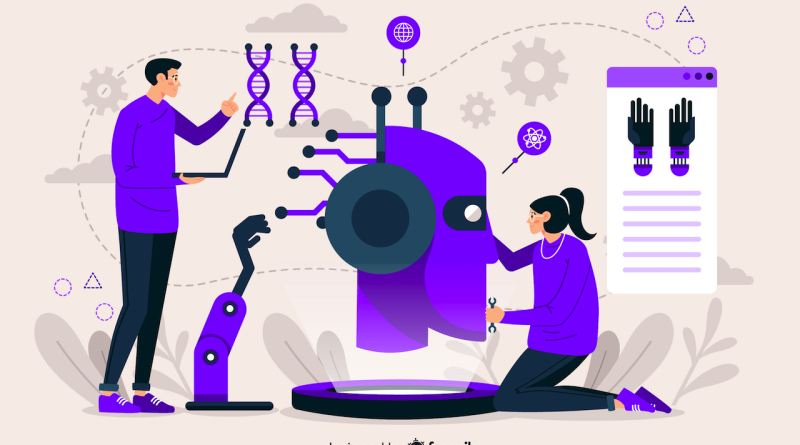Ethical Considerations in Machine Learning: Navigating the Gray Areas of a Digital World
Machine learning is no longer science fiction. It’s the engine behind your Netflix recommendations, the brain in your smartphone’s camera, and the invisible hand guiding financial markets. It’s powerful, sure. But with great power comes… well, you know the rest. A whole lot of ethical complexity.
We’re building systems that can learn and decide, and that’s a fundamental shift. It forces us to ask not just “can we build it?” but “should we?” Let’s dive into the murky, crucial world of ethical considerations in machine learning applications.
The Bias Problem: When Algorithms Learn Our Prejudices
This is, honestly, the big one. An ML model is like a student—its knowledge comes entirely from its training data. Feed it biased textbooks, and it graduates with a biased worldview. The problem is, our world is messy. Our data is a reflection of our history, our inequalities, our unconscious prejudices.
Think about it. A hiring algorithm trained on decades of industry data might learn that men are “better suited” for leadership roles because, historically, that’s who was hired. It’s not that the algorithm is inherently sexist; it’s that it’s perfectly mirroring a flawed reality. It’s automating the status quo, and the status quo isn’t always fair.
Common sources of bias creep in from all angles:
- Historical Bias: The data itself reflects past discrimination.
- Representation Bias: The dataset doesn’t adequately represent the entire population it will serve. Imagine a facial recognition system trained mostly on light-skinned faces—it’s going to struggle with everyone else.
- Measurement Bias: The way we choose to measure success is flawed. Optimizing for “speed” in a customer service chatbot might lead to unhelpful, rushed answers.
Transparency and the “Black Box” Conundrum
Why We Can’t Always Peek Inside
Many sophisticated ML models, particularly deep learning networks, are what we call “black boxes.” We can see the data going in and the decision coming out, but the “why” remains hidden in a labyrinth of complex calculations. This lack of explainability is a huge ethical hurdle.
If a bank’s algorithm denies you a loan, you have a right to know why. If a diagnostic tool flags a patient for a serious disease, doctors need to understand the reasoning to trust it. Without transparency, we can’t debug fairness, we can’t build trust, and we can’t be held accountable. It’s like a judge delivering a verdict without ever explaining the law they used.
Privacy in an Age of Data Hunger
Machine learning is ravenous for data. The more it gets, the “smarter” it becomes. This creates an inherent tension between innovation and the fundamental right to privacy. We’re constantly trading slivers of our personal information for convenience—a personalized ad, a faster route home, a curated news feed.
The ethical danger lies in how this data is collected, stored, and used. Can it be re-identified? Is it being sold? Is it used to manipulate user behavior in subtle, harmful ways? The concept of informed consent becomes blurry when users click “I Agree” to terms and conditions they don’t understand for data uses they can’t possibly foresee.
Accountability: Who’s to Blame When the Algorithm Fails?
This is a legal and ethical minefield. If a self-driving car causes an accident, who is responsible? The owner? The software engineer who wrote the code? The company that assembled the data? The AI itself?
Traditional models of liability struggle here. We need new frameworks. The concept of “algorithmic accountability” is emerging, pushing for clear lines of responsibility. It demands that organizations not only build ethical systems but also have processes in place to audit them, monitor their outcomes, and take responsibility when things go wrong.
Here’s a quick look at the chain of potential responsibility:
| Stakeholder | Potential Accountability |
| Data Providers | For sourcing biased or low-quality data. |
| ML Developers & Engineers | For model design choices and implementation errors. |
| The Deploying Organization | For the decision to use the system and for ongoing monitoring. |
| Regulators & Governments | For failing to establish clear guidelines and safety standards. |
Moving Forward: A Framework for Ethical ML
So, what’s the path forward? Throwing our hands up isn’t an option. Building ethical machine learning isn’t a one-time checklist; it’s an ongoing process, a culture. It requires a multidisciplinary approach, bringing together not just engineers and data scientists, but also ethicists, social scientists, legal experts, and representatives from the communities impacted by the technology.
Here are a few practical steps any organization can take:
- Diversity Your Teams. Homogeneous teams build homogeneous products. Diverse perspectives are the best defense against blind spots in ethics.
- Implement “Ethics by Design.” Bake ethical considerations into the development process from day one, not as an afterthought. Conduct impact assessments before a single line of code is written.
- Prioritize Explainability. Where possible, choose interpretable models. Invest in research and tools that help open the black box.
- Establish Continuous Monitoring. An ethical model today might not be one tomorrow. Continuously audit for drift, bias, and unintended consequences in the real world.
Honestly, it’s not about achieving perfection. It’s about striving for responsibility. It’s about recognizing that every line of code, every dataset, every model deployed is a reflection of our own values. The goal isn’t to create perfect, impartial machines—that’s an impossible standard. The goal is to create systems that are more fair, more transparent, and more accountable than the human-driven systems they often replace.
We are, in a very real sense, teaching our creations how to think. The real ethical test is what we choose to teach them about what it means to be human.

